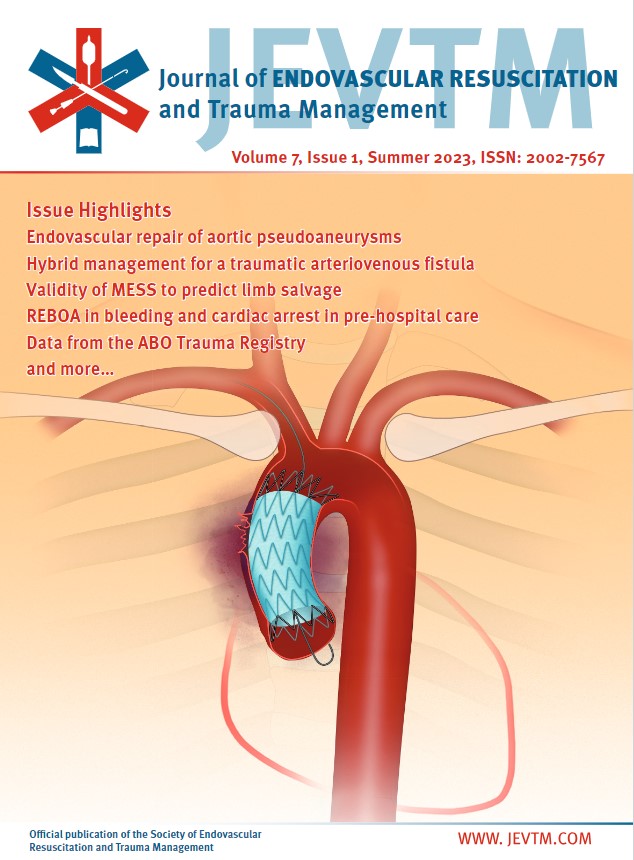Comparison of Outcomes Relating to REBOA Inflation Zones: Report from the ABO Trauma Registry
DOI:
https://doi.org/10.26676/jevtm.276Keywords:
REBOA, Trauma, Inflation Zone, Acute Haemorrhage, Endovascular InterventionAbstract
Background: Resuscitative endovascular balloon occlusion of the aorta (REBOA) is a temporary management modality for non-compressible torso haemorrhage that can be deployed in the pre- and intrahospital setting. This study aimed to compare outcomes following balloon placement in the three aortic zones.
Methods: This is a retrospective study using data from the ABO Trauma Registry. Relevant entries from January 2014 to December 2019 were used and stratified into three groups: those who received Zone 1, 2, or 3 balloon placements.
Results: The study sample consisted of 237 patients: 63 (27%) women and 174 (73%) men, median age 35 years. The primary location of the REBOA balloon was in Zone 1 for 180 patients, while it was nine in Zone 2 and 48 in Zone 3. Complication rates and total durations did not differ significantly between inflation zones. Emergency department mortality rates for Zones 1 and 2 patients were significantly higher than for Zone 3 (P = 0.04), but there was no difference between groups in 24-hour and 30-day mortality rates.
Conclusions: REBOA is currently used in the emergency setting for temporary stabilisation of the bleeding patient. In this cohort, balloon placement occurred in all zones of the aorta for similar durations, with no difference in complication rates between zones. Inadvertent Zone 2 placement was not found to be associated with increased complication rates.
Published
How to Cite
Issue
Section
License
Copyright (c) 2023 Journal of Endovascular Resuscitation and Trauma Management

This work is licensed under a Creative Commons Attribution-NonCommercial 4.0 International License.
Authors of content published in the JEVTM retain the copyright to their works.
Articles in the JEVTM are published under the terms of a Creative Commons CC BY 4.0 license, which permits use, downloading, distribution, linking to and reproduction in any medium, provided the original work is properly cited.




